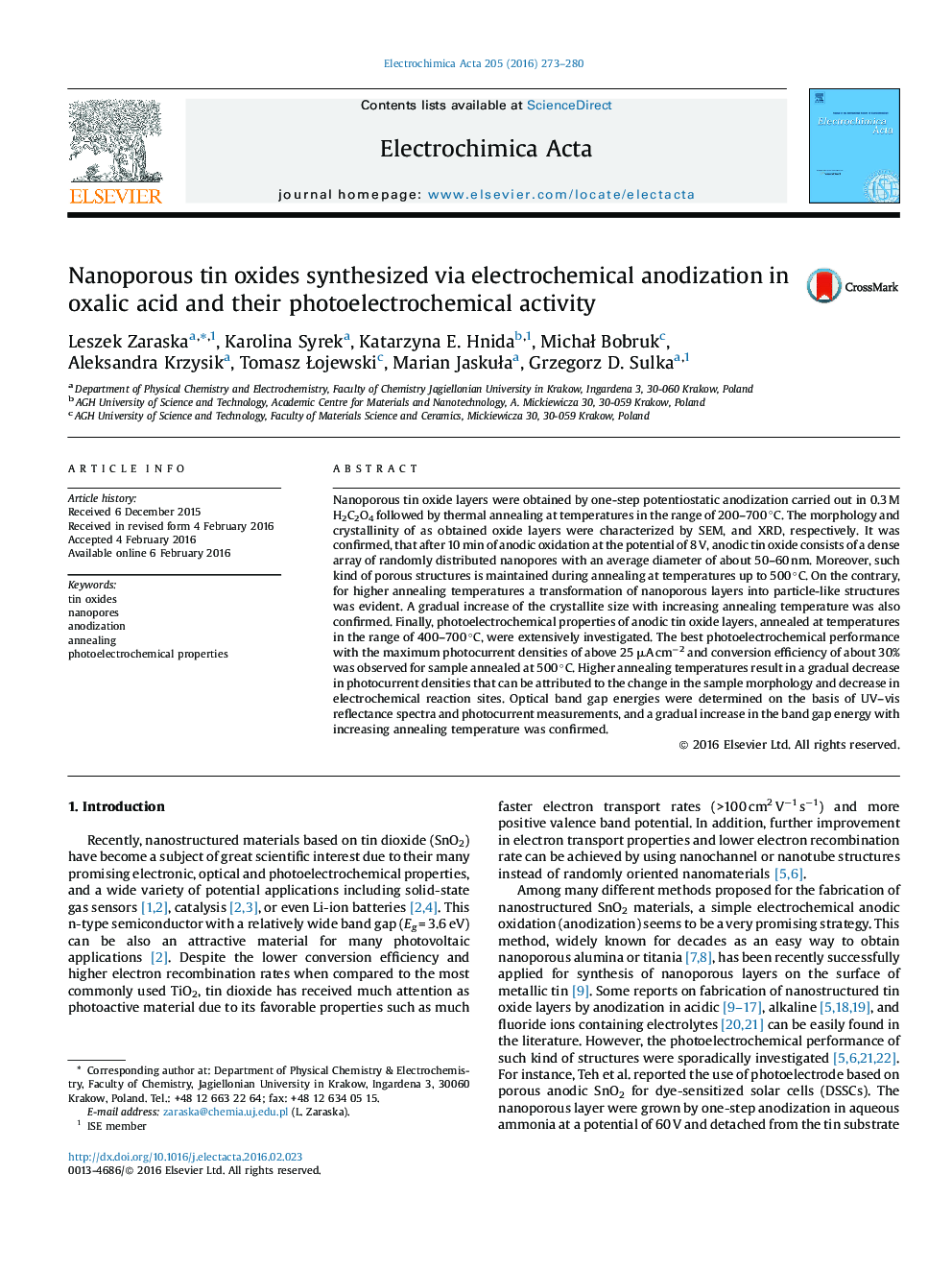| کد مقاله | کد نشریه | سال انتشار | مقاله انگلیسی | نسخه تمام متن |
|---|---|---|---|---|
| 182905 | 459527 | 2016 | 8 صفحه PDF | دانلود رایگان |
• Nanoporous tin oxide layers were grown by electrochemical anodization.
• Porous structure is maintained during annealing up to 500 °C.
• Crystallinity and optical band gap of anodic SnO2 increase with annealing temperature.
• The best photoelectrochemical properties were observed for SnO2 annealed at 500 °C.
Nanoporous tin oxide layers were obtained by one-step potentiostatic anodization carried out in 0.3 M H2C2O4 followed by thermal annealing at temperatures in the range of 200–700 °C. The morphology and crystallinity of as obtained oxide layers were characterized by SEM, and XRD, respectively. It was confirmed, that after 10 min of anodic oxidation at the potential of 8 V, anodic tin oxide consists of a dense array of randomly distributed nanopores with an average diameter of about 50–60 nm. Moreover, such kind of porous structures is maintained during annealing at temperatures up to 500 °C. On the contrary, for higher annealing temperatures a transformation of nanoporous layers into particle-like structures was evident. A gradual increase of the crystallite size with increasing annealing temperature was also confirmed. Finally, photoelectrochemical properties of anodic tin oxide layers, annealed at temperatures in the range of 400–700 °C, were extensively investigated. The best photoelectrochemical performance with the maximum photocurrent densities of above 25 μA cm−2 and conversion efficiency of about 30% was observed for sample annealed at 500 °C. Higher annealing temperatures result in a gradual decrease in photocurrent densities that can be attributed to the change in the sample morphology and decrease in electrochemical reaction sites. Optical band gap energies were determined on the basis of UV–vis reflectance spectra and photocurrent measurements, and a gradual increase in the band gap energy with increasing annealing temperature was confirmed.
Journal: Electrochimica Acta - Volume 205, 1 July 2016, Pages 273–280
